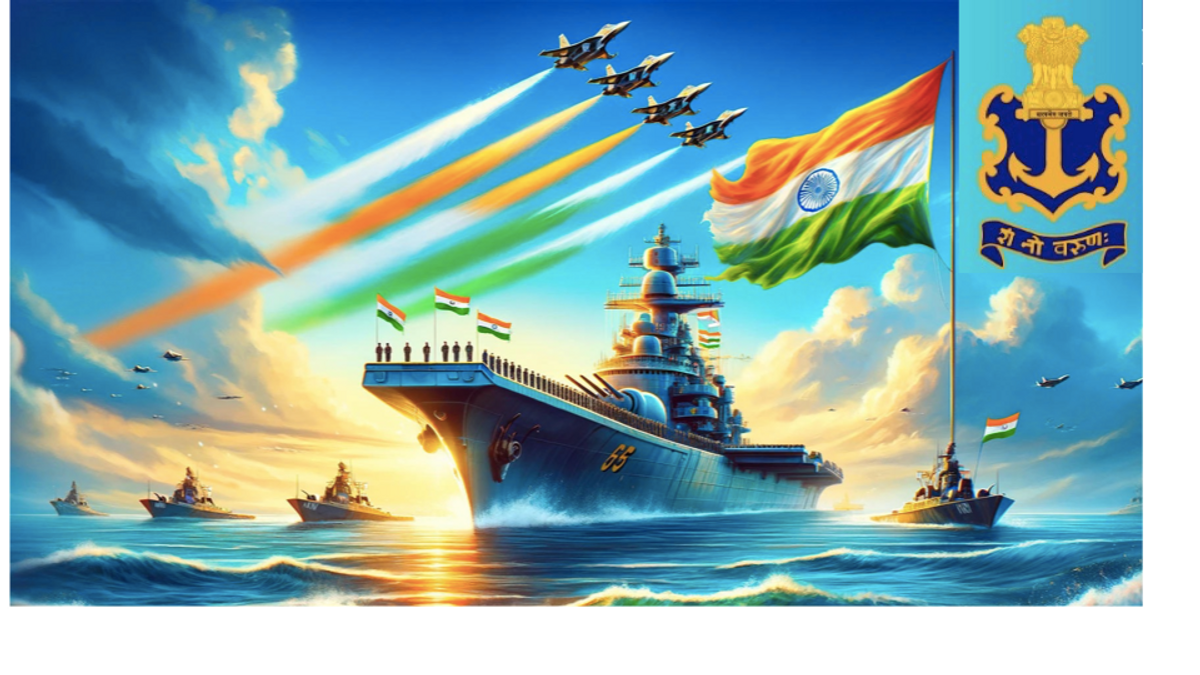
Strength & Woes of Indian Navy: Past, Present & Future
While wishing the Indian Navy the best of all on this ‘Navy Day’ on 4th Dec 2023, we intend to take a look on its past, present and future saga. Indian Navy had several laurels in the past even with their limited assets. However, since 2004, there was a lack of the modernisation of the Indian Armed Forces to level required. As a result, all three services suffered with the Navy affected the worst. Thanks to the firm stand taken by the Modi Govt to modernise the Armed Forces, Indian Navy by now is a strong regional force to reckon with, effectively securing the Indian interests from any type of threats emerging over wide maritime areas from the Gulf of Aden to the Malacca Straits. It may look an easy task on a casual look BUT it has several challenges posed by enemies and adversaries alike. China has already got a foothold through its ‘Strings of Pearls” in the Indo-Arabian Seas. These include their access to Gwadar port and two leased islands of Pakistan, Hambantota of Srilanka, Seychelles island as well as Myanmar and some others.
Chinese Expansionism in Indo-Arabian Seas
China has already gained military access at Pakistan’s Gwadar port on 40 year lease along with two Sind islands of Bundal and Bhuddo, Srilanka’s Hambantota and Myanmar’s Kyaukphyu ports. In addition, it already had presence in Djibuti and is also persuading Thailand to build a canal at the ‘Kra-Isthmus’ which would reduce its dependence on Strait of Malacca to pass from the Bay of Bengal to the South China Sea. China is also pressurising Bangladesh to grant access to Chittagong port through coercive ‘cheque-book’ diplomacy. China in future may try to obtain more foothold in the region with supportive basses with out-of-proportional increase in the Chinese naval assets that outnumbers even the US warships. Going by the antecedents of the Chinese hegemony in the South China Sea, they cannot be trusted upon. Their expansionism is for real that could pose severe security threats in the future.
Indian Naval Desperations of the Past
There was a time in the early 2010s that strength of Indian navy was severely restricted in the absence of modernisation for a decade. Those days warships were mostly purchased from other nations such as Russia, France, Germany or some others as well. Owing to the indifference of the UPA govt (2004-14) naval assets of India had severely depleted amidst obsoletion and decommissioning. Few previously contracted assets could not be procured in the absence of funds. Worse, the only aircraft carrier was on the verge of decommissioning and procurement of refurbished Russian aircraft carrier Admiral Gorchakov was gathering dust amidst escalating cost in 2012-14. Similar were the state of combat ships and submarines with no advanced vessel under procurement and no replacement in sight for the ageing ones either.
Those must have been the worst period of scare for the Indian navy amidst increasing Chinese threat and lack of warships. Coming of Modi govt was a blessing of the highest order for the Indian Armed Forces (esp Indian Navy) awaiting modernisation following decades of neglect. Indian Navy was not only unable to expand, but even lost many of its outdated assets without replenishment in relatively short span of time. India was in the dire needs for augmenting its naval assets to counter the Chinese expansionism in its vicinity. It had become difficult to safeguard the 7516 kms of coastal line with 1197-odd offshore islands besides a vast rich exclusive economic zone.
In the corridors of military powers, there is a saying, “no space can remain devoid of power; if one recedes, others expand”. This statement was increasingly becoming evident as the newer military powers gained strength. Not going far back in history, after the two past superpowers either constricted or at least become inadequate to sustain their might in a region, the newer powers invariably expand. It is a universal fact but glaringly so in the Indian subcontinent of Asia. China is fast emerging as a superpower trying to occupy and dominate all such regions that were earlier held by USA or the erstwhile USSR.
The Present Augmentation in Naval Assets under Atmanirbhar Bharat
Today, the count of major Indian Naval warship assets stand at over 300, with nearly a dozen and half of Submarines incl nuclear ones (some with very advanced technologies), a substantial increase since 2014 with indigenous push in Aircraft carrier, Submarines, Combat ships, Frigates, Destroyers, Corvettes…all included. Not to lag behind, is the Naval Air Power, both defensive & offensive, to keep a check on the intruders. Of special mention is the reconnaissance flights over the airspace, whether Territorial Waters, Special Economic Zone or the International Waters.
India witnessed a landmark event in the history of indigenous warship building under ‘Atmanirbhar’ ambitions. INS Vikrant with advanced technologies was commissioned recently in Nov 2022. In the last 9 yrs nearly 45 major Naval assets have been already commissioned and 45-odd are at different stages of constructions indigenously with all but two ships, under “Atmanirbhar Bharat’ plans. Both 15B and P-17A ships have been designed in-house by the Directorate of Naval Design (DND). Approx 75% of the equipment and systems have been placed on indigenous firms including MSMEs and the ‘Start-ups’ which is a true testament of ‘Atmanirbharta’ in the country.
While the number of the assets are increasing, their teeth too are becoming credible with the introduction of Ships/Subs equipped with surface to surface ballistic missiles, Ship to ship as well as ship to air. In addition Mirage and SU-30 aircraft of IAF have been interfaced with augmented Brahmos missile (with 400 Km range) with electronic/digital warfare assets (in the form of ‘Shakti’ handed over to the Indian Navy very recently). Some of these new assets pose incredible power projections, desperately needed for long.
The Future Expansion of Indian Might in the Sea
India has multiple security challenges. While it has enemies and adversaries on northern and western borders, three sides of coastal areas leading into Arabian and Indian Oceans incl Bay of Bengal are the most challenging. The challenges could arise anywhere from Gulf of Aden to the Malacca Strait. Further, with the QUAD cooperation firming up, Indian navy may have to prepare itself to take up missions in the South China Sea as well. Presently the outreach is limited in both Eastern and Western Oceans with China and Pakistan already trying to extend their joint cooperation. India in coming years must bring up newer naval bases in the smaller islands on its western side as well as in the Greater Nicobar island to bring Malacca Strait under its offensive ranges. This reach may have to be extended up to Thailand’s Kra-Isthemus through which the Chinese may sneak-in for any misadventure. Untrustworthiness of the Chinese are well known. This needs augmentation of both quality & quantity of the Indian Naval Assets. Naval power expansion by China will mandate India to dominate surrounding seas, be it Bay of Bengal, the Indian Ocean or the Arabian sea. We wish the Indian navy the very best of all.


